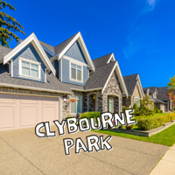
Overview
Synopsis
Winner of both the Pulitzer Prize and the Tony Award for Best Play, Clybourne Park is a razor-sharp satire about the politics of race. In response to Lorraine Hansberry’s A Raisin in the Sun, playwright Bruce Norris set up Clybourne Park as a pair of scenes that bookend Hansberry’s piece. These two scenes, fifty years apart, are both set in the same modest bungalow on Chicago’s northwest side that features at the center of A Raisin in the Sun. The first scene takes place before and the second scene takes place after the events of A Raisin in the Sun. In 1959, Russ and Bev are moving out to the suburbs after the tragic death of their son. Inadvertently, they have sold their house to the neighborhood’s first black family. Fifty years later in 2009, the roles are reversed when a young white couple buys the lot in what is now a predominantly black neighborhood, signaling a new wave of gentrification. In both instances, a community showdown takes place, pitting race against real estate with this home as the battleground.
Show Information
Context
Playwright Lorraine Hansberry’s family bought a house in the white neighborhood of Washington Park, Chicago. The action resulted in a legal case, Hansberry v. Lee, 311 U.S. 32 (1940). Her play, A Raisin in the Sun, tells the story of an African-American family who also moves into an all-white neighborhood in Chicago. Bruce Norris’ Clybourne Park is written in response to Hansberry’s earlier play, and portrays events Norris has imagined might have taken place in the home featured in A
to read the context for Clybourne Park and to unlock other amazing theatre resources!Plot
Act One
It is 3 PM on a Saturday afternoon in 1959. Bev and Russ’ three-bedroom Bungalow in Clybourne Park is packed into boxes. After the death of their son, their grief has compelled them to sell their home and move to the suburbs. Russ sits, reading and eating ice cream, while Bev – assisted by her housekeeper France -- continues to pack. Russ and Bev bicker (sometimes playfully, sometimes with more charge behind it) about the names of various European capitals. They theorize
to read the plot for Clybourne Park and to unlock other amazing theatre resources!Characters
| Name | Part Size | Gender | Vocal Part |
|---|---|---|---|
|
Lead |
Female |
Spoken |
|
|
Lead |
Female |
Spoken |
|
|
Lead |
Female |
Spoken |
|
|
Supporting |
Male |
Spoken |
|
|
Supporting |
Female |
Spoken |
|
|
Supporting |
Female |
Spoken |
|
|
Supporting |
Male |
Spoken |
|
|
Supporting |
Male |
Spoken |
|
|
Supporting |
Male |
Spoken |
|
|
Supporting |
Male |
Spoken |
|
|
Featured |
Male |
Spoken |
|
|
Featured |
Male |
Spoken |
|
|
Featured |
Male |
Spoken |
|
|
Featured |
Female |
Spoken |
|
|
Featured |
Male |
Spoken |
Songs
A song with an asterisk (*) before the title indicates a dance number; a character listed in a song with an asterisk (*) by the character's name indicates that the character exclusively serves as a dancer in this song, which is sung by other characters.
Monologues
Scenes
Key Terms
A group of performers who function as a unit in a production rather than as individuals with leading roles.
A prestigious U.S. award for achievements in journalism, literature, and drama. Many modern plays that reflect social and political themes have received this honor.
Videos
Quizzes
Themes, Symbols & Motifs
Sorry! We do not currently have learning modules for this guide.
Quote Analysis
Sorry! We do not currently have learning modules for this guide.
